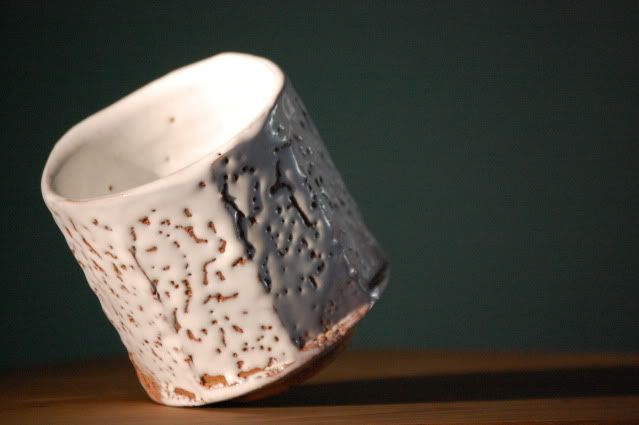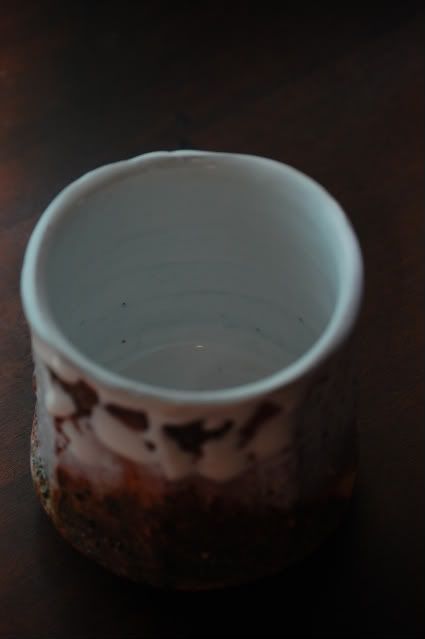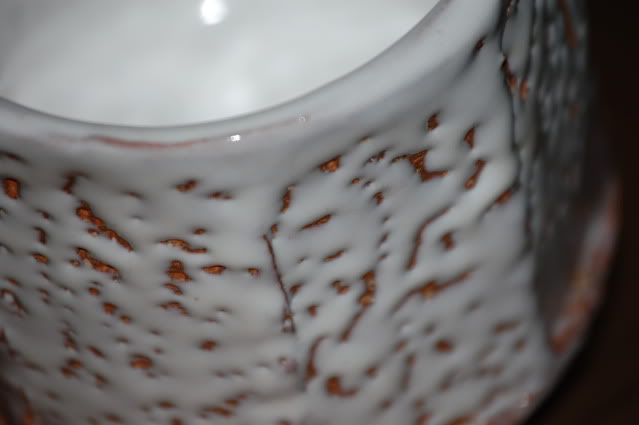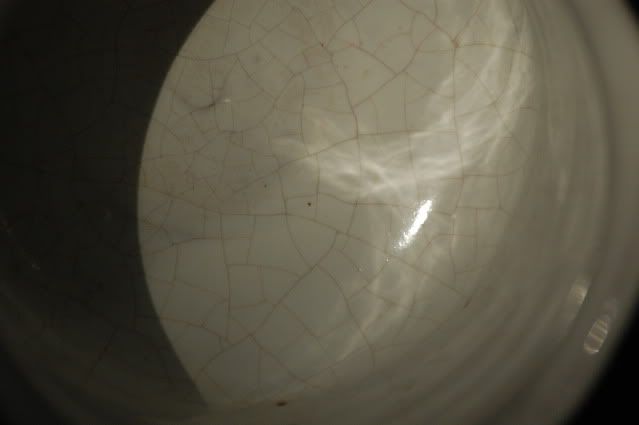A good example of this situation with manganese is some of the absolutely GORGEOUS youhen tenmokus that have that lovely sparkily crystally surface. (I have some lovely guinomi like this that I do not use!) Another variation that is of concern for leaching copper is the contemporary American oribe glazes that are very dark green with flecks of black mattish stuff on the surface in certain areas.
REMEMBER, a huge percentage of the glazes that studio potters use are colored with compounds of stuff like iron and titanium. These are basically non-issues even if thay do leach. Most glazes that are other colors have very low inclusions of the coloring oxides, and therefore those oxides present little leaching hazard for that chemistry.
You have to keep this all in serious persepctive. The biggest hazards from ceramic materials are experienced by the POTTERS themselves. All in all, the possible risks to the consumer are very, VERY small.
From what I know of Hagiyaki..... the glaze does not contain anything that would present a hazard even with that orange juice stored in it .
John,
This is a very informative post done in layman's terms for which I thank you.
If I may be permitted to add a comment or two, your statement that the biggest hazards from ceramic materials is to the potters is quite correct and most of it occurs in the form of free silica, which causes silicosis, found in studio air. Manganese di-oxide is also suspect in it's dry or volatized form via inhalation however the particle size is too large to be absorbed in it's wet form through the skin via osmosis. Concerning your statement on American Oribe, I remember a dinner party I held years ago at which I served a Mexican dish drizzeled with lime juice on an Oribe platter that I had made. Waiting 'til morning to clean up, much to my surprise, the previously somwhat opaque/cloudy Oribe glaze had be etched bright by the lime juice. Lately, much of what I'm working on tends to use no oxides as colorants ie. shino, kohiki, or iron and titanium only ie. tengu.
Onihagi as created by the Miwa kiln uses warabai, rice hull ash, which with it's high silica content gives the glaze it's white color with any pink blushing found on the work being yohen, or kiln effects. Probably the "Seigan blue" which is so popular here is a titanium/ash based glaze (?) which should be faily safe no matter what one might put in it.
Many thanks John.
R
ps. Seeker posted a fine example of a Chosen garatsu piece which he titled "cucumber" which is a tenmoku base glaze (iron) with a nuka glaze(warabai) on top....... should be totally safe...... enjoy!



